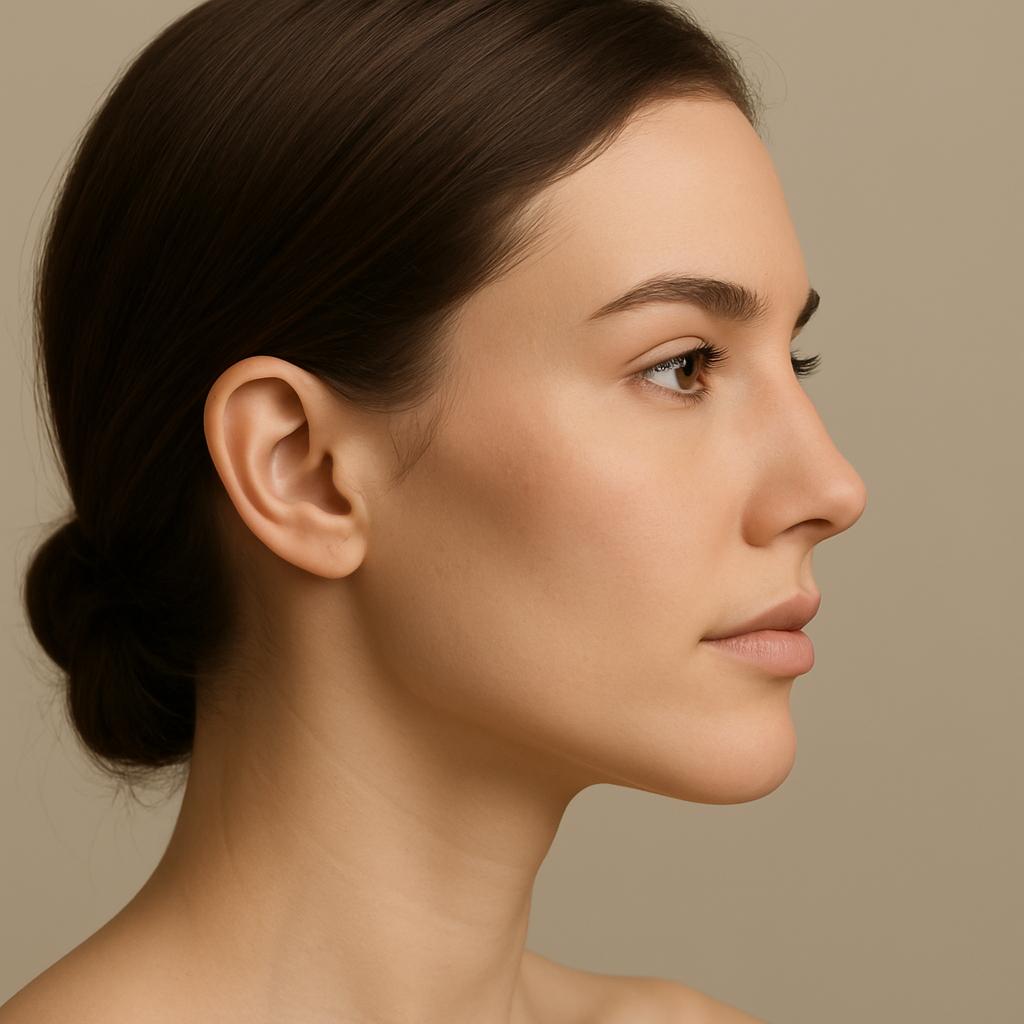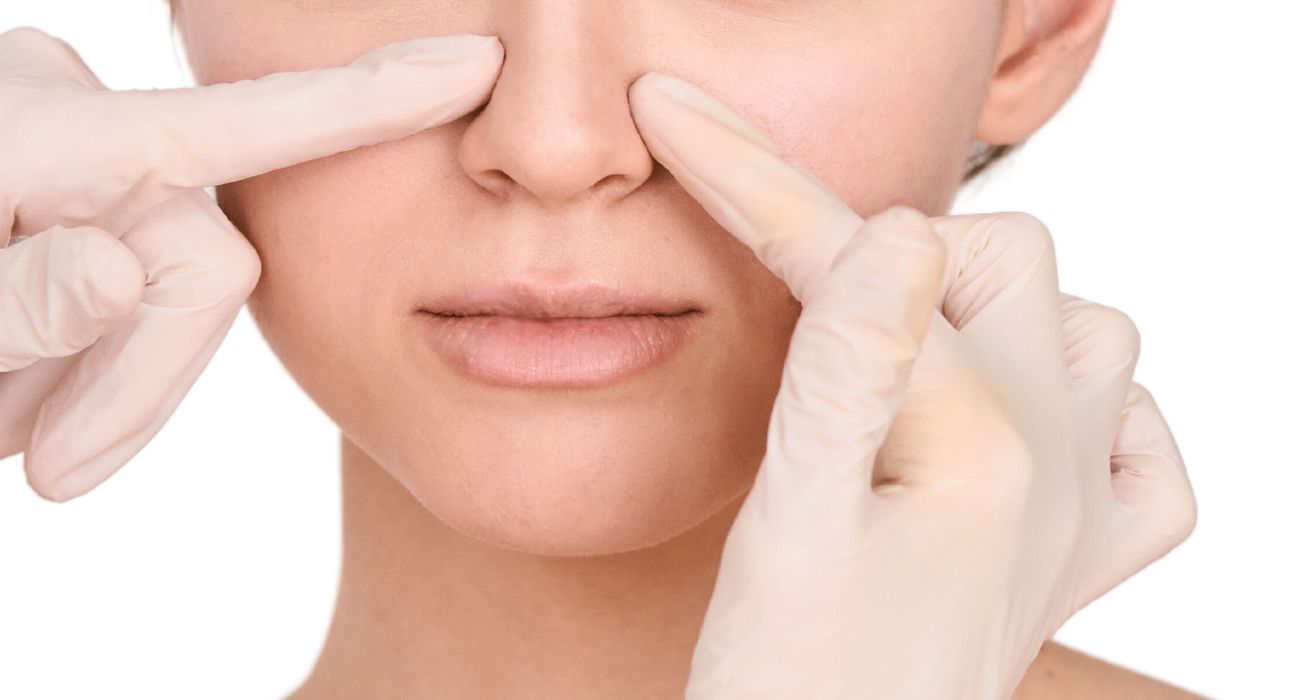When we think of aesthetic beauty, our attention is often drawn to eyes, lips, or skin. But beneath these expressive features lies the unspoken foundation of attractiveness—facial structure. Among all structural elements, the chin and jawline play an underestimated yet critical role in maintaining facial proportion, harmony, and balance.
In this blog, we take a deep-dive into the anatomy, proportions, and surgical approaches that reveal how subtle corrections to the chin and jawline can result in a significant aesthetic transformation—without ever looking “done”.
The Science of Facial Proportion
Facial aesthetics is not random—there’s an entire science behind what humans perceive as attractive. One of the most referenced tools in facial assessment is the Rule of Thirds and Golden Ratio (1.618:1).
The “Facial Thirds”:
The face is divided vertically into three equal sections:
-
Upper third: From the hairline to the glabella (mid-brow)
-
Middle third: From the glabella to the base of the nose
-
Lower third: From the base of the nose to the tip of the chin
A harmonious face should ideally have all three-thirds of equal length, and within the lower third, the chin should occupy one-third of that segment.
When the chin is too short (microgenia) or receded (retrogenia), it throws off these proportions—making the nose appear larger, the neck look fleshier, and the face look rounder or unstructured.
Chin: Small in Size, Big in Impact
The chin influences both frontal and profile aesthetics. It’s not just a bony point—it defines the neck contour, lip projection, and jawline definition.
Common Chin Irregularities:
-
Retrogenia: Receded chin due to underdeveloped mandibular symphysis
-
Microgenia: Small or narrow chin affecting vertical height
-
Macrogenia: Over-projected chin
-
Asymmetry: One side of the chin is larger or lower than the other
These discrepancies may be skeletal (bony) or soft tissue related, and identifying the type is crucial for choosing the right treatment modality.
Jawline: The Contour Frame of Your Face
The mandible is the U-shaped bone forming your lower face. It has:
-
Body (horizontal part)
-
Ramus (vertical part)
-
The angle of the mandible
-
Symphysis (chin area)
A youthful, balanced jawline is typically well-defined from ear to chin, has a clear mandibular angle (110–120° in women, 120–130° in men), and tight soft tissue coverage.
In aging or genetically soft jawlines, this contour becomes blunted, saggy, or asymmetrical.
Surgical Techniques to Correct Facial Disproportion
Dr. Anjali Saple performs precision-based jaw and chin surgeries in Vizag using advanced imaging, cephalometric analysis, and individualized planning. Let’s break down the common procedures and their indications.
1. Sliding Genioplasty (Bony Chin Advancement)
This is the gold standard when the goal is the permanent correction of a receded or asymmetric chin due to skeletal deficiency.
Procedure:
-
A cut (osteotomy) is made in the chin bone via an intraoral incision.
-
The segment is slid forward (advancement), downward (lengthening), or laterally (to correct asymmetry).
-
Fixed using titanium plates and screws.
Indications:
-
Retrogenia without malocclusion
-
Chin asymmetry
-
Short lower facial height
-
Weak profile
Benefits:
-
No foreign implants
-
Precise millimeter control
-
Permanent solution
Downtime:
-
1 week for major swelling to subside
-
Bone healing in 6–8 weeks
2. Chin Implants
In patients with mild to moderate deficiency or for those avoiding osteotomy, implants are a preferred option.
Implant Materials:
-
Silicone (most common)
-
Medpor (porous polyethylene)
Procedure:
-
A custom or pre-shaped implant is inserted through a hidden incision (either submental or intraoral).
-
Positioned over the mandibular symphysis.
Advantages:
-
Minimally invasive
-
Reversible or replaceable
-
Quick recovery (3–5 days)
Limitations:
-
Cannot correct vertical deficiencies
-
Slight risk of implant mobility or contour mismatch
3. Jawline Contouring (Mandibular Angle Surgery)
This is a more comprehensive reshaping procedure for the entire lower jaw contour.
Approaches Include:
-
Angle reduction: For patients with overly wide or masculine jaw angles.
-
Angle augmentation (implants or fat grafts): For a sharper, more structured appearance.
-
Masseter muscle reduction: Using Botulinum toxin in patients with hypertrophic muscles or square faces.
Indications:
-
Masculinization or feminization
-
Asymmetry
-
Aging-related jowl formation
Downtime:
-
7–10 days depending on invasiveness
-
Results evolve over 3 months as swelling resolves
Non-Surgical Options for Facial Balancing
For patients who are not surgical candidates or prefer temporary changes, non-surgical chin, and jawline contouring is an excellent option.
Dermal Fillers (Hyaluronic Acid-Based)
-
Add volume, definition, and symmetry
-
Correct mild retrusion
-
Last 12–18 months
-
Virtually no downtime
Ideal for:
-
First-time enhancement
-
Special event preparation
-
Combination with Botox for lower face slimming
Botox for Jaw Slimming
Used to reduce the bulk of masseter muscles, especially in patients with bruxism or a square lower face.
Onset: 2–3 weeks
Duration: 4–6 months
Case Planning: How Dr. Anjali Saple Approaches Each Face
Dr. Saple uses:
-
Photographic and video analysis
-
3D morphing software
-
Golden ratio analysis
-
Occlusal and skeletal assessment (if needed)
Each face is mapped based on the following:
-
Facial thirds
-
Soft tissue thickness
-
Mandibular prominence
-
Patient goals (masculinization vs feminization)
She then customizes a plan that may combine:
-
Genioplasty + mandibular angle augmentation
-
Fillers + jawline liposuction
-
Chin implant + neck lift
-
Botox + filler combo
The Emotional Impact: It’s More Than Just Aesthetic
Many patients report:
-
Increased self-confidence
-
Better posture and presence in photos
-
Improved professional and social interactions
-
A sense of facial “completion”
Unlike exaggerated transformations, Dr. Anjali Saple’s philosophy is built on enhancing what’s already beautiful—small refinements, major impact.
Ready to Refine Your Facial Balance?
Explore how subtle chin and jawline enhancements can create natural, lasting harmony.

Final Word: A Small Change Can Shift Everything
In facial aesthetics, millimeters matter. The chin and jawline, though often overlooked, can dramatically elevate your overall appearance. Whether you’re seeking subtle refinement or structural correction, Dr. Anjali Saple’s surgical artistry ensures results that are balanced, natural, and proportionate to your individual anatomy.
Looking to redefine your facial harmony?
Schedule a personalized consultation with Dr. Anjali Saple at her Vizag clinic and explore the most advanced options in chin and jawline surgery tailored just for you.





